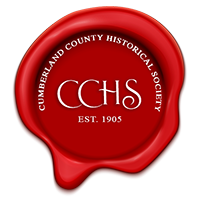By Victoria Scannella, Library Assistant
The Trans-Atlantic Slave trade began around 1526 and was active until 1867. However, it was between 1720 to 1780 that most of the enslaved people were brought to British North America from West Africa. (1) In an effort to free those who had been forcibly brought to the United States, many people worked together to organize a system to help enslaved escape bondage. Prior to the “official” implementation of the Underground railroad, however, enslaved people who were trying to escape bondage, later known as “freedom seekers”, were sometimes able to escape bondage and live out their days as a free person. There were numerous underground railroads across the country that connected to places of safe haven for those who were able to escape.
The name of the “Underground Railroad” was metaphorical, as there was no actual railroad, nor did it run underground. It was named as such due to the undercover and hidden nature necessary to escape. “Railroad” came from the organized system of routes that were used to guide people to safe haven. Most of the escaped enslaved who were able to break out of bondage from the South and the West were generally moving toward the North or Canada. Not everyone in the North was an abolitionist. However, the presence of the Underground Railroad did help to inspire some sympathy from non-abolitionists. (2) There were many routes that ran through the state of New Jersey, ranging from as far south as Cape May to North Jersey. In New Jersey, “Though subsequent social and legal changes allowed greater freedom for persons of color in Jersey than in the adjacent states of Delaware and Maryland, it remained a slave territory in conscience and practice until at least the nineteenth century.” (3)
There were many famous Underground Railroad conductors including Harriet Tubman, William Still, Frederick Douglass, and Sojourner Truth. Tubman helped the railroad operate for 8 years, and helped around 50 formerly enslaved people escape to Philadelphia from Maryland and Delaware. She worked in Cape May waiting tables, cleaning rooms, and as a hotel cook. This was all in order to pay for her trips South, and when the Civil War broke out, Tubman also worked as a nurse for the Union. (3) One Delaware Quaker named Thomas Garret was also crucial in the North as a station master. He assisted, funded, and aided people escaping enslavement as they moved through the Underground Railroad. Garret was a supporter of William Still, brother of Dr. James Still and Peter Still, as well as the Secretary of the Philadelphia Vigilence Committee. William Still aided in finding safehouses, organized routes, and raised funds for self-emancipated people who had reached their final destination in the north.
There were numerous branches of the Railroad in New Jersey, including the Greenwich Line, which began in Springtown and continued all the way to Jersey City, with stops in Mount Holly and Burlington, New Jersey. This route had a lot of stops that were surrounded by Quaker farms, swamps, or woods, where free African Americans made communities. Another line ran out of Cape May, through Snow Hill (present day Lawnside), Haddonfield and Camden. These resulted in small, tight knit communities around the state that were known as safe havens for the escapees. (3)
Roughly 10 years prior to the Fugitive Slave Act of 1793, a teenager named Isaac Hopper had begun systematically freeing enslaved people and moving them further North, with the help of Quaker communities in Philadelphia. George Washington, in a letter written in 1786, wrote that “where there are numbers who would rather facilitate the escape of slaves than apprehend them when runaways.” (3) The Underground Railroad became an official “route” following the Fugitive Slave Act of 1850. Although there had already been a legislature in 1793 under the same title, it was after the second iteration that the Railroad became a more organized and intentional way to help the enslaved escape from bondage. Some sought refuge in the North, especially after the breakout of the Civil War, while others escaped the United States entirely, choosing instead to go to Europe, Canada, and Mexico. (4) In Parallel Communities by Dennis Rizzo, he posited, “Under the revised statutes of the late eighteenth and early nineteenth centuries, in which any person of color was presumed a slave unless he or she could prove otherwise, kidnapping became rampant and profitable. Once “sold South,” it was near impossible for a person to find his or her way home to friends and family.” (3) This occurred within the Still family, as William’s older brother Peter was kidnapped prior to William’s birth and was sold South. It wasn’t until 40 years later that Peter made it back to Philadelphia and became involved in the Underground Railroad (3).
The Underground Railroad was one of the most influential and powerful aids in helping the formerly enslaved peoples escape and find their freedom in numerous communities around the Northern United States, sometimes able to reunite with their friends and family, or otherwise finding their “found” family. It took the work of many people to organize and operate the Underground Railroad, and why it was such a success in aiding many escapees from enslavement. To highlight these accomplishments and celebrate Black History Month, we wanted to discuss the massive presence of the railroad in the Cumberland County area of New Jersey, as well as the communities present today as a result. Happy Black History Month!
- Mintz, Steven. “Historical Context: Facts about the Slave Trade and Slavery.” Historical Context: Facts about the Slave Trade and Slavery | Gilder Lehrman Institute of American History. https://www.gilderlehrman.org/history-resources/teacher-resources/historical-context-facts-about-slave-trade-and-slavery.
- “Underground Railroad.” Encyclopædia Britannica, February 16, 2024. https://www.britannica.com/topic/Underground-Railroad.
- Rizzo, Dennis C, Parallel Communities: The Underground Railroad in South Jersey. Charleston, SC: History Press, 2008.
- “The National Underground Railroad Network to Freedom (U.S. National Park Service).” National Parks Service. https://www.nps.gov/places/crnurr.htm.
- “The Underground Railroad.” Education, https://education.nationalgeographic.org/resource/underground-railroad/.

